Why study STEM? Because it’s fun!
22 Apr 2021
They study the formation of planets, the security of information technologies or develop nanosensors: Female scientists tell us what they find exciting about their field of research.
22 Apr 2021
They study the formation of planets, the security of information technologies or develop nanosensors: Female scientists tell us what they find exciting about their field of research.
They study the formation of planets, the security of information technologies or develop nanosensors: Female scientists tell us what they find exciting about their field of research.
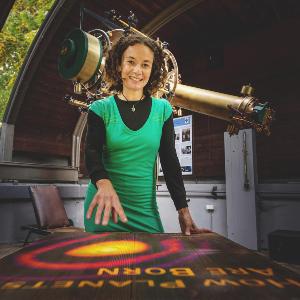
“I’m interested in how planets like our Earth formed or are still forming and how they are eventually able to host life. What I find exciting about my work is that you never know where your research will take you and you never stop learning,” says physics professor Barbara Ercolano. She heads the Chair of Theoretical and Numerical Astrophysics at the University Observatory Munich.
The astrophysicist’s tip for choosing a career or degree course is to “imagine that what you choose will be a significant part of your life. So it’s important to choose something you really enjoy and think is worthwhile pursuing.”
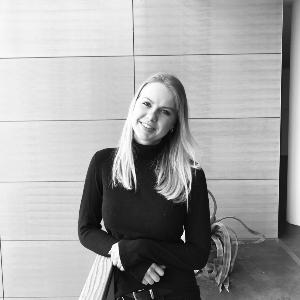
Friederike Wolff is investigating cell division in human cells. “More precisely, I focus on the last step of cell division, the cytokinesis. At the end of each cell division the mother cell physically splits into two daughter cells what leads to the distribution of the genetic material as well as other components to the two daughter cells“, says the biologist. She is part of Dr. Esther Zanin’s group at the Biocenter of the LMU, which is working on the molecular mechanisms that control cell division in time and space.
“Cell division is an essential process for life. Defects in cytokinesis can result in birth defects, miscarriage, as well as cancer”, explains Friederike Wolff. “Nevertheless, many fundamental questions remain unsolved in this area, which makes it a very exciting research topic for me.”
“I can only advise everyone to study what they are passionate about”, says Friederike Wolff. “After graduating from high school, I wasn't one hundred percent sure either and simply followed my interests. Now, in the last year of my doctorate, I can say with full conviction that I am absolutely right here.”
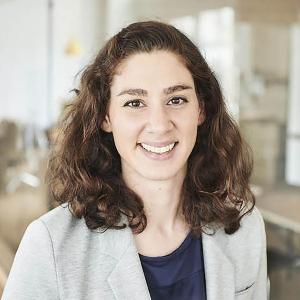
Linda Hirsch’s work combines technology and its real world applications. The UX designer is a research assistant at the LMU Chair of Human-Machine Interaction and specializes in developing interactive technologies for historical sites. “I approach the topic from different perspectives. We might experiment with materials, like interactive concrete, or we might look specifically at listed buildings or sites such as the Alter Südfriedhof cemetery in Munich. And we collaborate with museums too — say, to make one of the busts interactive or maybe the info point outside.”
Linda Hirsch loves working at the point where people, machines and their context all come together. “It’s a good mix between psychology, computer science and design,” says the UX designer.
Her tip for choosing a career or degree course: “Be brave enough to choose subjects that may be unfamiliar to you but that you find interesting. I’d never considered IT before and I got into it pretty much by chance. That made me realize you can learn anything as long as you enjoy it, and you don’t necessarily need to have any prior knowledge.”

“I’m researching IT security, or more specifically a small part of the question of how different devices and users can communicate securely with each other,” says Sophia Grundner-Culemann. The mathematician is a research assistant in the Munich Network Management Team at the LMU Institute of Informatics. “In the work I do day to day, I love teaching. What I like about my research is the mix of imagination and objectiveness — you need both.”
Her tip for choosing a degree: “I found it really great to study something as fundamental as mathematics. You can then specialize later — and all the better for it!”
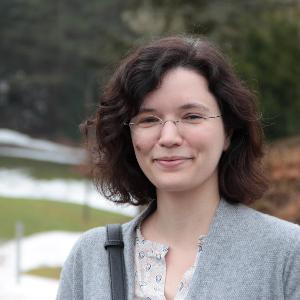
Sabine Jansen’s research concerns probability theory and mathematical physics, focusing in particular on mathematical statistical mechanics. “What links it all together is always the question of how order on a large scale emerges from disorder on a small scale: How can it be that the behavior of many individual agents—say, molecules in a gas—is modeled using probability theory in order to explain deterministic laws of materials? The field has a very long tradition, but many fundamental questions remain unanswered,” says Jansen, a professor in the LMU Department of Mathematics.
What Sabine Jansen finds particularly exciting is the interdisciplinary dialogue. “Words like ‘proof’, ‘exact’, or ‘rigorous’ do not have quite the same meaning in mathematics as in theoretical physics. An awareness of this fact is absolutely essential when you’re working with sources from different branches of research on a daily basis.” Thanks to her interdisciplinary interests, the mathematician repeatedly comes across “surprising cross-connections. For instance, it was only after years of working with mathematical models for gases and materials that I learned in a lecture that the same class of models is used in spatial statistics: for the distribution of trees in a forest or deposits of natural resources in geology.”
Her advice for aspiring female mathematicians is, “Don’t be put off or intimidated if your motivation, working style and pace don’t seem to match those of your peers or fellow students. Sometimes it takes time to find your niche.”
Sabine Jansen knows that people can be passionate about mathematics for many reasons—its practical relevance in applied science, its relevance to fundamental philosophical questions, or simply for the fun of solving puzzles. “Not every aspect has to appeal to you equally!”
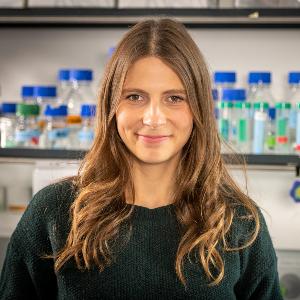
© LMU MUENCHEN
Dr. Viktorija Glembockyté works with unbelievable tiny structures. In her research she develops DNA nanostructures. A nanometer is only one billionth of a meter in size. “My current research involves using the tools of DNA nanotechnology and single-molecule imaging to develop sensors at the nanoscale. I use a technique that is called DNA origami – similar to paper origami, DNA origami allows you to “fold” complex 2-dimensional and 3-dimensional structures”, says Viktorija Glembockyté, who works at LMU’s Chair of Physical Chemistry. Recently the scientists developed DNA based nanoantennas: “We were able to detect a single DNA molecule specific to antibiotic resistant bacteria just with a help of a smartphone camera”!
"First, I find it exciting how many different functionalities one can place on a tiny nanostructure using the tools of DNA nanotechnology and this can be done with one nanometer precision! As a chemist, I see this as a molecular play board where a number of different functionalities can be combined and this provides an endless possibility to design new functions, build nanomachines or study processes taking place at the nanoscale. Another aspect, that I found really fascinating already in my PhD studies, was the ability to visualize and study single molecules – this provides an ultimate sensitivity one can hope for when it comes to really understanding what is happening on the molecular level and discover new phenomena".
Viktorija’s tip for young scientists is to explore different topics and not shy away from trying out new things until one finds the research direction or question that really interests and motivates one. “This often entails stepping outside of your comfort zone and maybe doing things that you are less familiar with – it is often easy to stick to the path of least resistance, but this does not necessarily converge to the topic you might be enjoying the most. Create opportunities for yourself to explore different areas of research: apply for an internship or volunteer in different research laboratories, attend some talks from scientists around the world and ask questions. In my opinion, finding this topic that fascinates you, is one of the key ingredients in making this career path enjoyable and coping with possible setbacks that doing science entails. Another thing that I think can make a huge difference is choosing the right mentor - try to find a supervisor(s) with whom you can not only share this enthusiasm for the subject, but also someone who is supportive and encouraging along the way.
2:30 | 16 Apr 2021
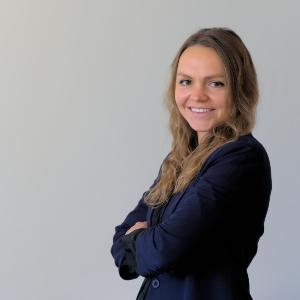
Dr. Kateryna Trofymchuk works in the same group as Viktorija Glembokyté. She finds it fascinating that, in the field of DNA nanotechnology, “we can program and control the creation of objects that are far beyond the visual acuity of the human eye. We can provide these structures with different functionalities for various purposes e.g. for imaging, sensing, diagnostics, nanorobotics.”
Complicated devices and specialized training are not required, says Kateryna: “After a week of training, internship students can synthesize these “nanomachines”, and after some months they can design their own. Of course, it has taken decades of painstaking development to get this far, but still, it’s incredible to see how things that were considered almost as sci-fi not that long ago are slowly becoming routine.”
Young researchers should not be afraid to ask questions, says Kateryna: “Ask Ph.D. students, postdocs, professors what they are doing and why, and I can assure you that most of them will be more than happy to share with you why they are engaged with their topics.”